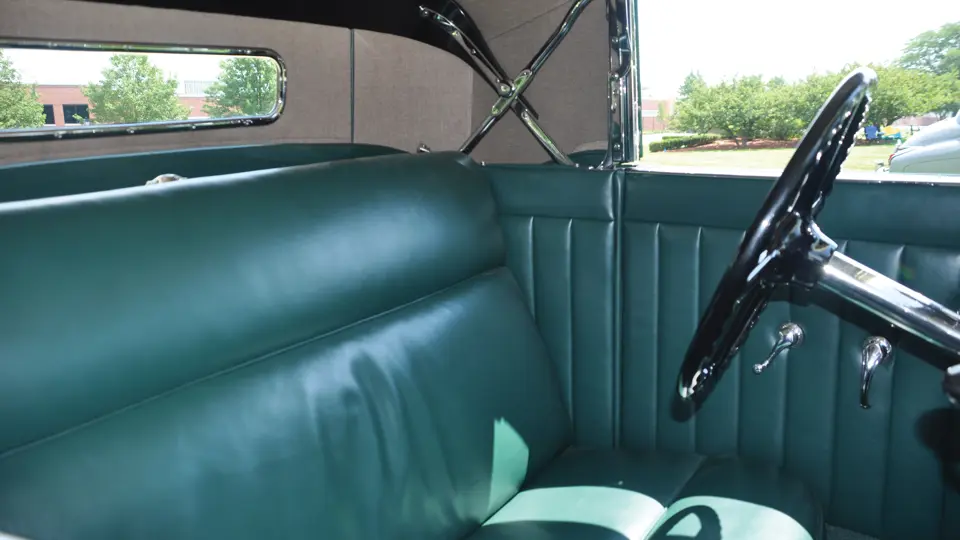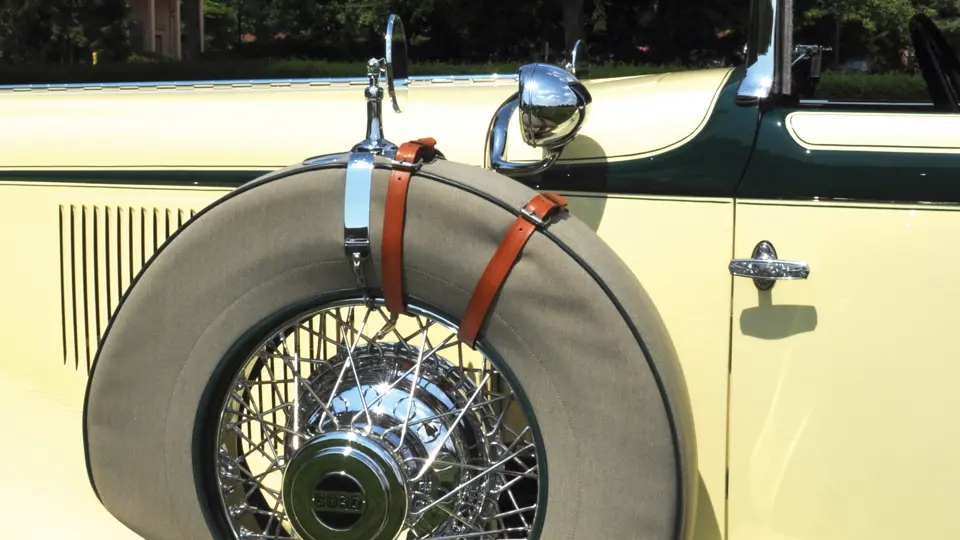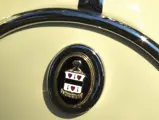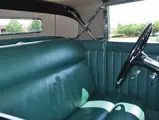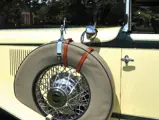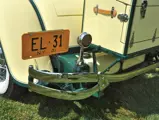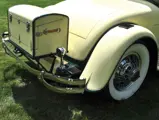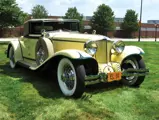130 bhp (est.), 322 cu. in. inline L-head eight-cylinder engine, three-speed front-drive manual transmission, live front axle with dual quarter-elliptic leaf springs, tubular beam rear axle with semi-elliptic leaf springs, and four-wheel hydraulic brakes. Wheelbase: 137.5"
• Pioneering front-wheel drive American car
• Long documented history; single ownership from 1960s to mid 1990s
• Rare optional engine
• ACD certification pending
Errett Lobban Cord was the savior of the Auburn Automobile Company and the patron of Duesenberg. His long-standing ambition, however, was a car to bear his own name. In August 1929, he realized his dream with the announcement of the Cord L-29.
Having become the top salesman for Moon in Chicago, Cord took the job of general manager at the foundering Auburn company in 1923. With it came an agreement that if sales improved sufficiently he could buy into the firm. He then spruced up the accumulated inventory of unsold Auburns with bright paint jobs and nickel trim and quickly sold them all. By 1926, Cord was president of the company and held a controlling interest. He readied new models and positioned Auburn as a performance car at a low price, which further enhanced sales. That year, he acquired the ailing Duesenberg operation to serve as the flagship of his growing empire.
With the top and the bottom of his automotive catalogues complete, Cord set out to define the middle. There was nothing ordinary about the Cord automobile. For architecture he chose an x-braced frame, and for propulsion he selected front-wheel drive. Chief engineer on the project was Cornelius Van Ranst, who had built a front-drive race car for the 1927 Indy 500 with driver Tommy Milton.
The engine was a straight eight from Lycoming, another of Cord’s companies, turned around in the chassis so the transmission was at the extreme front. For simplicity, the drum brakes were mounted to the inboard ends of the drive axles, and a long shift rod went up and over the engine, through the firewall and into the dashboard. The car was long and low, and production body styles included a five-passenger brougham, a sedan, a phaeton sedan and the very handsome body on this car, the cabriolet.
This Cord L-29 cabriolet has spent most of its life in the Los Angeles area. Its earliest known owner was Eddie Brewer, a dialect coach at one of the Hollywood film studios. In the late 1940s, Brewer sold the car to Osro J. Smith, a charter member of the Horseless Carriage Club of America. In the 1960s, it went to Smith’s daughter, Marcella Smith Cartwright, from whom the current owner acquired it in 1996.
There followed a 12-year restoration with close attention to detail. The power train, which includes the rare 322-cubic inch engine made available late in 1931 (as evidenced by the FF engine number), was completely rebuilt with insert bearings and modern seals. The restoration was completed just one week before the 2009 Auburn Cord Duesenberg Reunion, where it was honored with the E.L. Cord Award as the Best L-29 and Best of Show with the Harold T. Ames Award. Other recent awards include a First Primary award, with 100 points, at the 2010 Classic Car Club of America meet at Malvern, Pennsylvania and a First Junior from the Antique Automobile Club of America at Canandaigua, New York. It received First Senior honors at the 2010 Auburn Reunion and Best American Classic at the Radnor Concours d’Elegance in Pennsylvania.
Awards in 2011 include First Senior at 100 points at the Dearborn, Michigan CCCA Grand Classic meet, Senior Emeritus and Best L-29 at the Auburn Reunion, First Premier at the Canton, Ohio Grand Classic and Best Classic at the Glenmoor Gathering.
At the 2011 Auburn Reunion it was entered for ACD certification, which authenticates provenance and originality of Auburns, Cords and Duesenbergs. The certificate is expected to be received early in 2012. A rare and much celebrated example of the Cord L-29 Cabriolet, this car is magnificent in yellow and green. Its known history and desirable specification make it all the more attractive.
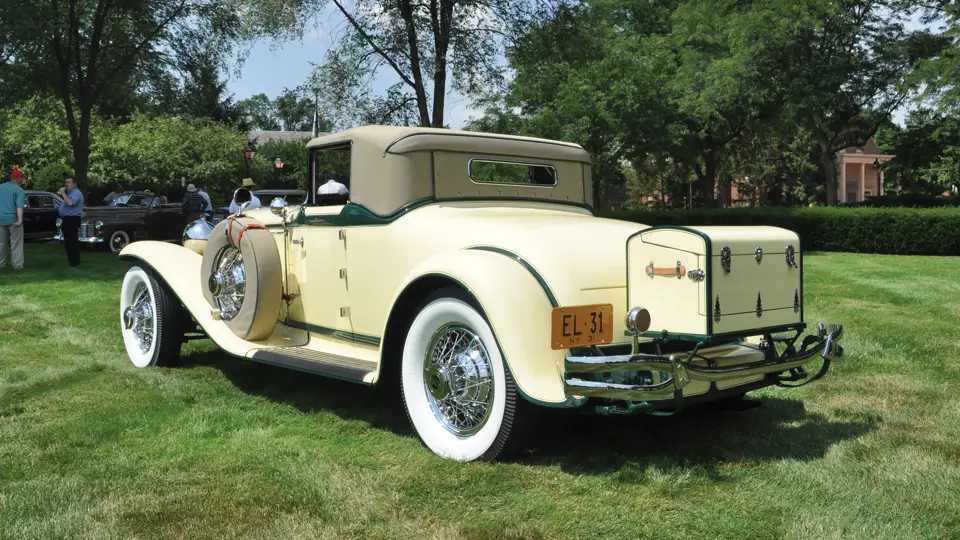



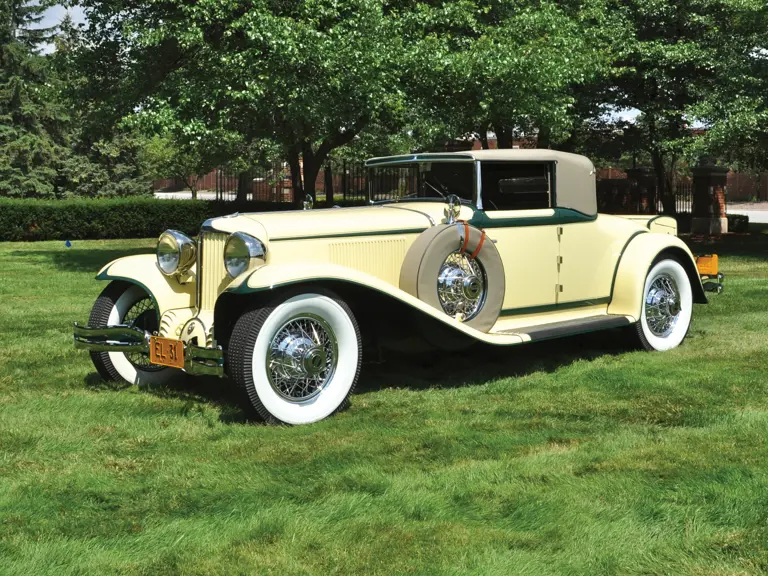


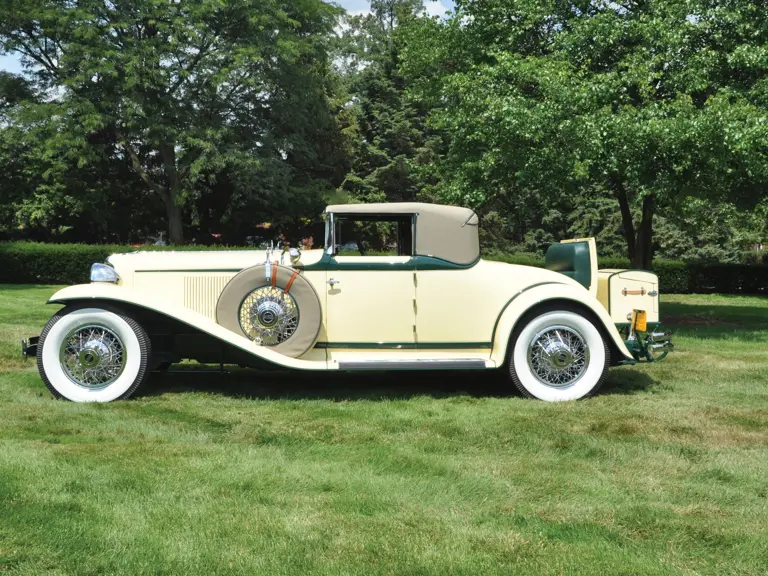
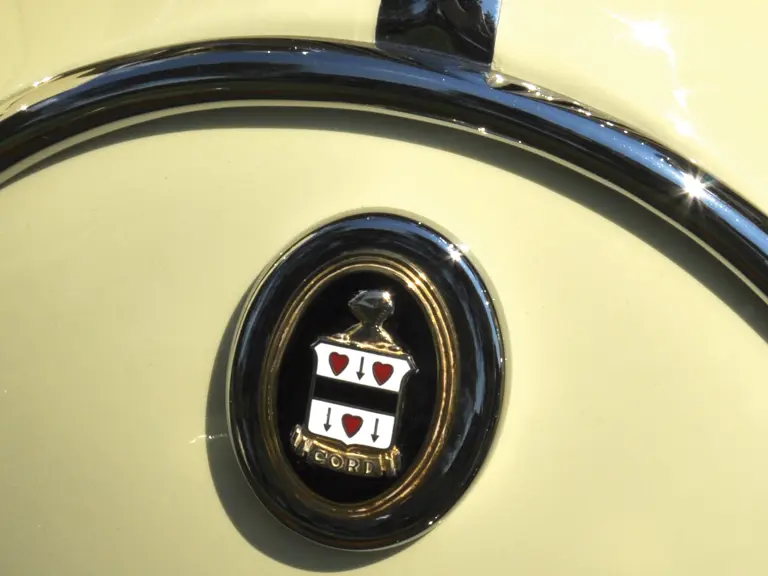
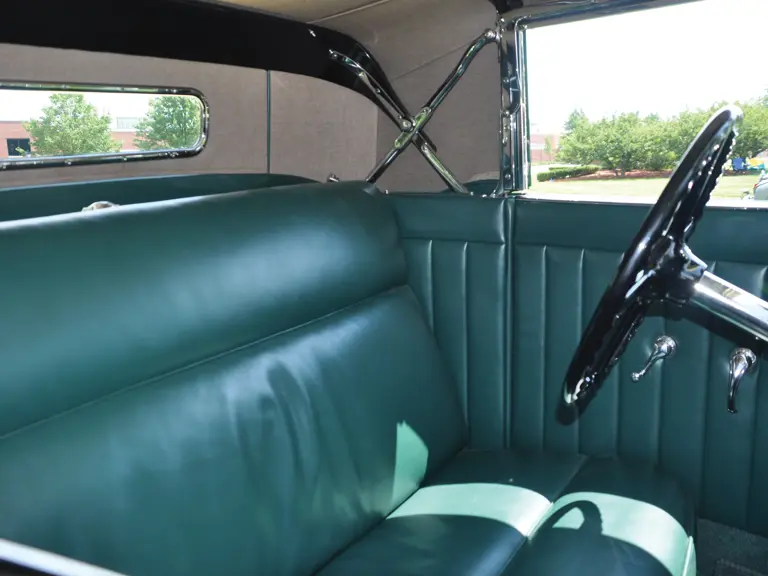
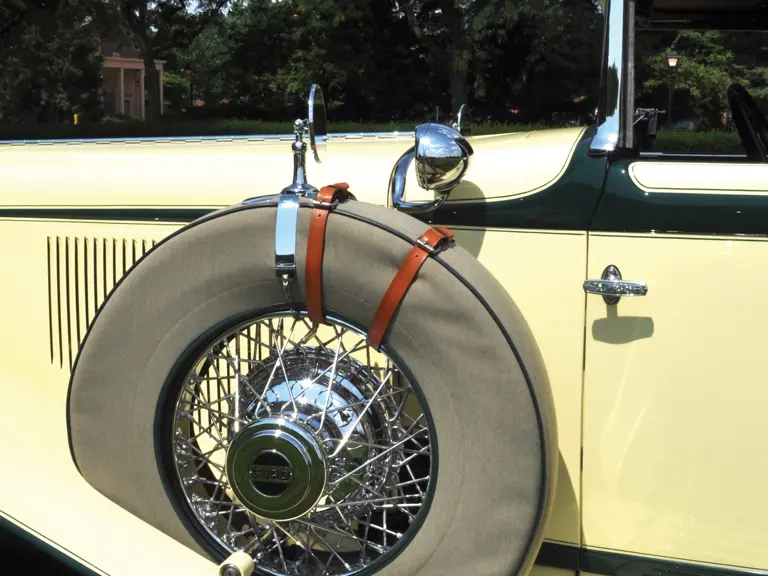

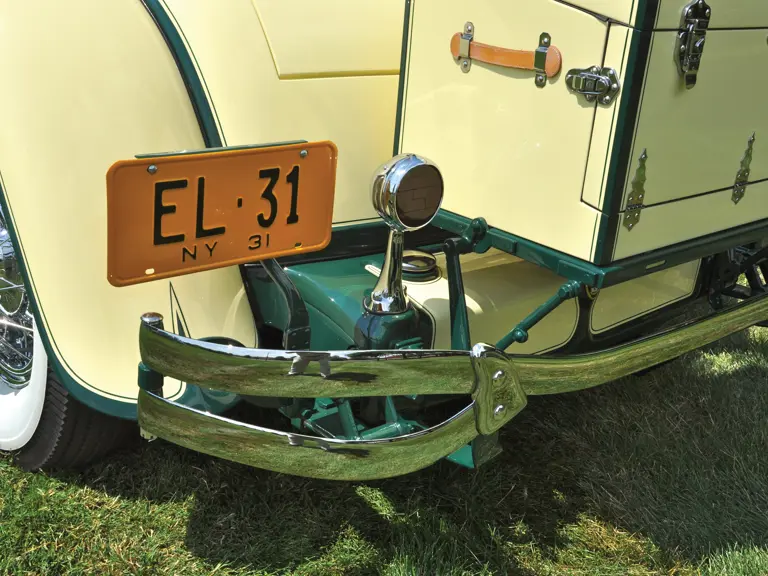
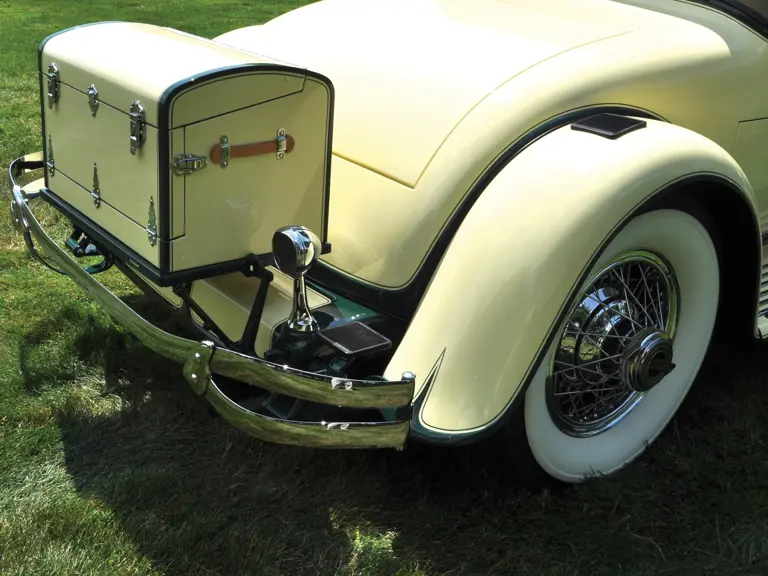
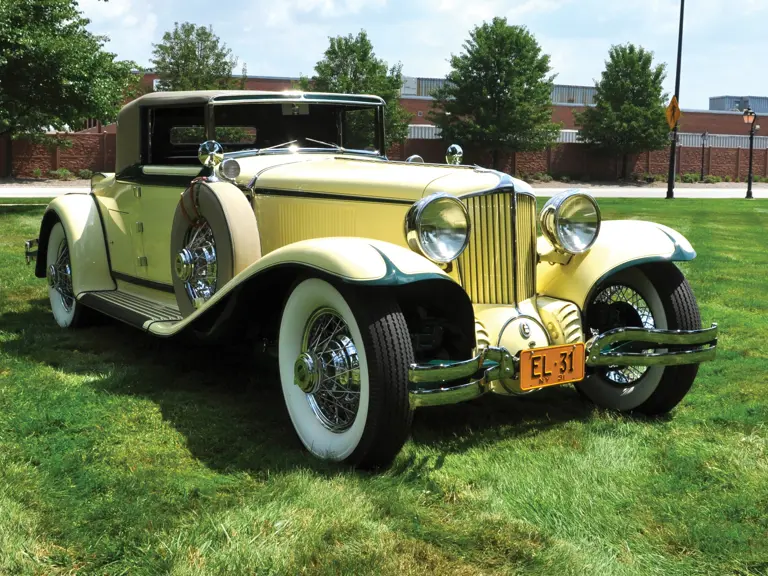
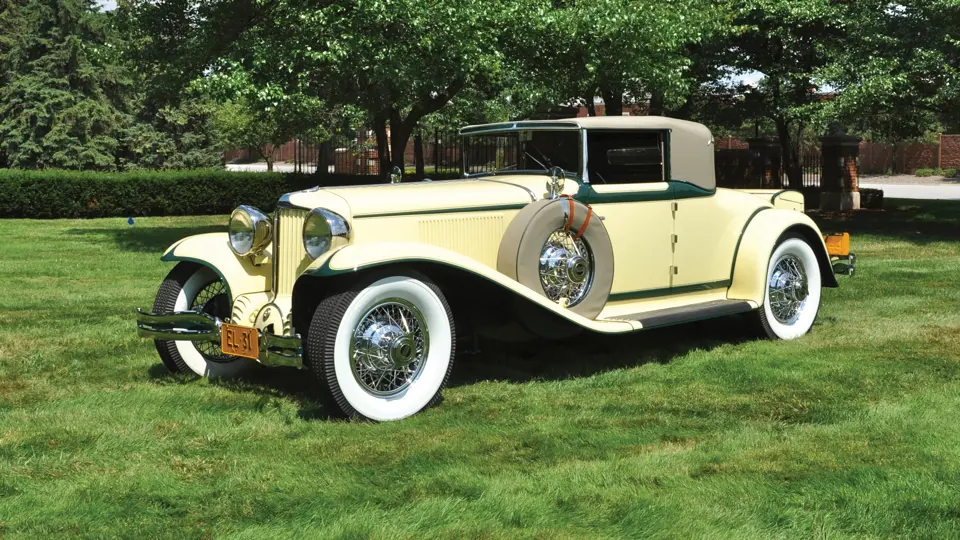
 | Amelia Island, Florida
| Amelia Island, Florida

